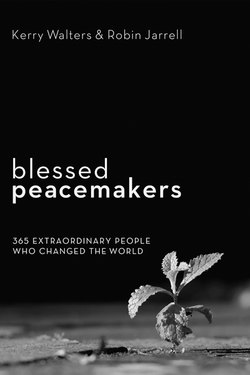Читать книгу Blessed Peacemakers - Robin Jarrell - Страница 76
На сайте Литреса книга снята с продажи.
13 March Ham Sok-Hon
Оглавление13 March 1901—4 February 1989
Two Roads
If the effectiveness of a peacemaker is determined by how many repressive regimes he angers, Ham Sok-Hon has excellent credentials. Over his long career as an advocate of nonviolence, he was persecuted by the Japanese, the Soviet Russians, and finally by his fellow Koreans.
Born the son of a well-off physician in North Korea, Ham was expelled from one of the country’s best schools in 1916 for protesting Japan’s colonial rule of his homeland. Although a public apology could have gotten him reinstated, Ham refused. He eventually earned a degree in history, however, and taught for a number of years. But his nonviolent resistance to Japanese imperialism never wavered, earning him imprisonment four times in the years leading up to World War II. When the Soviets occupied Korea after the war, Ham also refused to cooperate with them. After he rejected the offer of a professorship at Kim Il-sung University because he realized it was simply a bid for his cooperation, he was arrested, beaten, and nearly executed before managing to escape to South Korea. During the Korean War three years later, he met members of the American Friends Service Committee and became a Quaker. Ham was attracted to the religion because of its pacifism and its lack of exclusionary doctrines. For Ham, there were many different paths to God, and he saw Quakerism, which he thought especially compatible with Buddhism and Taoism, as sharing that conviction.
In South Korea, Ham continued his public witness for peace and democracy, frequently opposing the repressive regimes of South Korean presidents Syngman Rhee, Park Chung-hee, and Chun Doo-hwan. He was jailed or placed under house arrest many times in retaliation for his criticisms of them.
Ham’s social activism was based on fidelity to what he called the two “roads”: the road to freedom and the road to love. By the first, he meant a political and economic democracy that protects human rights and allows individuals to flourish. By the second, he meant a religious perspective that embraces human suffering and seeks to ameliorate it.
Like Mohandas Gandhi, to whom he was often compared, Ham believed that sometimes the roads to freedom and love are so blocked by evil that force may ultimately be necessary to clear them. But he always considered it a last rather than a first resort. “We should keep to the principle of nonviolence,” he said, “but not leave the people who are struggling. We should try to keep with them and to educate them. In the struggle there are several degrees or states—the best one, the second best one, the third best one. If you feel that it is impossible to follow the best one you should choose the second best or the third one. Just to keep silent and remain unmoved is much worse than to choose the second or even third state. Still, we must always urge the people to use the best method.”
